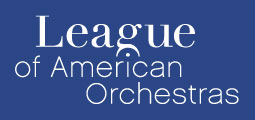The Ivory Ban – Important Instrument Travel Information
From the League of American Orchestras: “The recent Obama Administration effort to increase restrictions on travel and trade in African Elephant ivory has placed a new focus on long-existing, but largely unimplemented permitting rules for international travel with instruments that contain endangered species material.”
The League has published a helpful webpage with very detailed information about this issue. Click here for that page. The League will be updating that page as more information becomes available.
In addition, here is a link to a related article that was recently published by NPR.


How does one determine exactly what material is in one’s bow? I have 2 bows with “ivory” tips that I’ve owned for decades. No idea whether the makers are even still alive. Fortunately, I don’t generally need to travel with my instrument, but if I ever did, how could I find out whether it’s African elephant or Asian elephant or mammoth or whatever?
This is certainly a question that others have as well. Let us ask around and see if we can get more information.
Here is a response from Heather Noonan, the League’s Vice President for Advocacy:
This is an excellent question that does not have a satisfactory answer. Some bowmakers can tell the difference, depending on whether the cut of the tip reveals the grain of the bone, which can indicate the source. USFWS inspectors say they can do it, haven’t explained exactly how, but do post some information here. At the end of the day, it is possible to do DNA analysis, but no one seems to know how you might do that without damaging the material – or how on earth one could afford it. This is yet another practical problem with the system. We are asking USFWS what form of documentation would be acceptable proof that an instrument does not contain ivory. We don’t have a clear answer yet. In the meantime, USFWS is advising that musicians that are uncertain should seek a permit to be on the safe side. Again, not a satisfactory answer, but it is the one we have now. Please check our website, as we are updating it frequently: http://americanorchestras.org/advocacy-government/travel-with-instruments/endangered-species-material/protected-species-travel-tips.html with additional information on the left navigation panel.